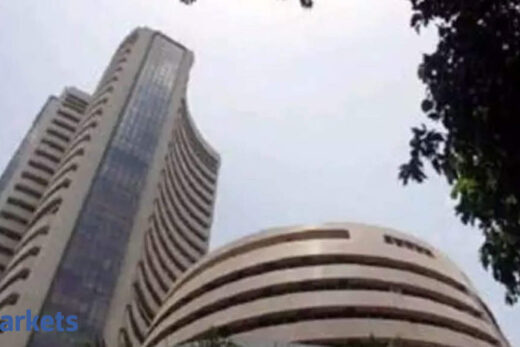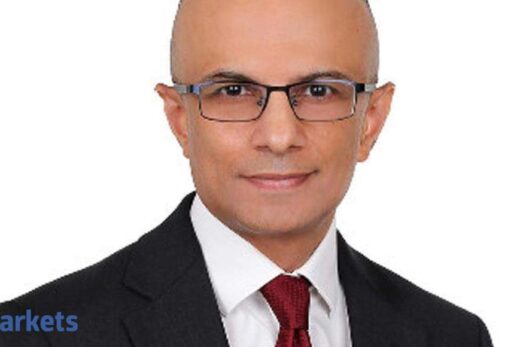So far it has been a sideways correction but do you think if the external factors were to worsen, we are in for a deep rout in the markets?
The markets have been correcting lately after having reached a peak. We are not reaching any dangerous levels for stocks to really tumble. We are only seeing the front line stocks getting a profit booking kind of correction. Given that an US stimulus package is put in place, fairly robust readings are coming in from corporate earnings so far. The outlook from most of the companies suggest that we will have better earnings going ahead. Despite fears about Covid cases rising, I would tend to believe that the risk in the markets are not pertinently high and therefore recovery will follow suit. The stock corrections in the front line stocks would probably abate after a couple of sessions.
The banking sector looks like a pain point for the markets right now. Would you pick up some of these private sector banks, NBFCs and insurance companies on dips?
Since the banking sector is the dominant portion of the market, there are opportunities galore in the NBFC space. But having said that, one has to be a little careful because when you have rising bond yields and the yields are not significantly high, in such situations, one should be careful about picking only those companies who have strong capitalisation.
From a balance sheet point of view, one has to look at both the liability as well as the asset side. The asset side would primarily focus on what kind of NPA levels are there on the liability side. One would focus on what the capital is. Now is the time to focus more on the liability side. Within the liability side, focus on the capital that most of these banks or NBFCs are maintaining. When you have a high level of capital adequacy ratio, the growth ahead is in a way secured as the ability to absorb structurally higher NPAs already exists. So higher capital adequacy ratio companies or banks or NBFCs are what we would pick up in this market.
I am surprised by the strength in metals. If there is a risk-off trade in the world, metals are the first one to crack and then it is banks. Banks have fallen on expected lines but metal stocks from SAIL to Vedanta, from Tata Steel to Nalco are trading with a positive bias. Why?
The metal rally has got to do with the belief that the manufacturing activity has resumed at a really rapid pace particularly in China and driving that is this belief that the US stimulus package will provide the vital consumption boost which will drive up the demand for metals. Eventually metal demands will come from a higher level of consumption in the US, better economic activity across the group and new investment activities.
One can visualise a situation where when crude oil prices go up, the ability to invest in oil producing or related projects goes up. So, all this is driving up metal prices. Plus, within metal, we also have a peculiar phenomena linked to the surge coming from electric vehicles. There is a general belief that as we move into the EV space, consumption of certain metal elements will go up and that is driving up the prices of those elements, leading to the metal rally.
The disconnect that we are seeing is because of the stimulus package led consumption moves leading to a pickup in manufacturing activity. Plus certain metals are getting undue attention because of the EV surge. I am saying undue is because many times we find that prices rally ahead of the actual event and that is probably happening right now. So it is due later, but undue now.
What about IT trade? Are these dips good opportunities to buy midcap IT stocks?
We have an outstanding call on Coforge. We like certain midcap IT names but more often than not, we would rather recommend the large caps within the IT space than the midcaps. The only thing going well for IT companies is that in a Covid kind of environment, their business is working nearly as usual. They may have challenges in delivering services to a certain set of clients, but the orders are not cancelled or are not getting postponed. That tells us about the revenue momentum that they have garnered so far and are likely to garner ahead. In fact, it can accelerate further if the recovery takes a solid form.
If we are talking about a sharp double digit growth in GDP next year, something similar will be the case with other countries. So IT companies, which are essentially global facing, have a possible likelihood of accelerated earnings growth as we go ahead. So yes, IT is something that we should continue to buy on dips.
Do you think we are in for a period of choppiness before the big selloff or the global adjustment in respect to the bond yields is over and that FII flows are unlikely to reverse?
Let us not look at the bond yields in the US alone. We have to look at the real interest rates in the US and one of the proxies to that is the inflation protected securities that they have on a similar time scale. The US real interest rates are actually negative and despite the spike in the bond yields, the spike in the real interest rates is not happening. We are still in the negative territory and so the bond selloff should really happen and therefore the equity selloff should happen only when we are above the zero zone or rather positive territory.’
That is why we are seeing that whenever the newest bond yields spike, there is an accompanying volatility in the market but overall after a few days, the effect wears off and we do not see that big selloff coming just as yet. There is yet another phenomenon of balancing the rise in US bond yields. The strong recovery that we are seeing in the US economic activity is prompted by the stimulus package. For the past few months, there was always this debate about whether this stimulus package will pass the Houses and whether it will come out in a different shape. It has come out in the shape that it was originally envisaged and it is a fairly large stimulus package.
So what happens is that between the rising bond yields and the higher economic output, asset price inflation will remain curtailed or there would not be a big asset price correction. That is the broader view that we would tend to hold right now. But the risk to this view would be what happens locally within our country and that means if our economic recovery fails to take off or takes off at a slower pace, then we might have a correction in our kind of markets.
We are in an overvalued zone, there are no two ways about it. But globally most equity markets are also in an overvalued zone. According to me, this overvaluation will exist so long as there is supportive monetary policy, supportive fiscal policy globally and as of now. I do not see any reasons for those policies to be withdrawn either in a gradual manner or in a strong move. So, as long as we have those policies which are fair or liberal to the markets, I do not think we are going to see asset prices correct too much.



